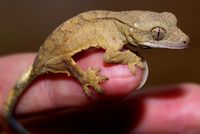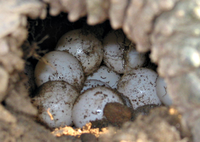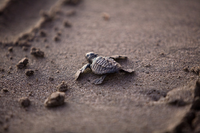Difference between revisions of "Reptile"
(→Lifecycle of Reptiles) |
|||
| Line 3: | Line 3: | ||
===Meaning=== | ===Meaning=== | ||
| − | A '''reptile''' is an [[animal]] with a [[backbone]] that has dry | + | A '''reptile''' is an [[animal]] with a [[backbone]] that has dry scales and usually lays soft [[Egg|eggs]] on land. |
: Singular [[Noun]]: '''Reptile''' | : Singular [[Noun]]: '''Reptile''' | ||
| Line 31: | Line 31: | ||
===Meaning=== | ===Meaning=== | ||
| − | A '''reptile''' is an [[animal]] with a [[backbone]] that has dry | + | A '''reptile''' is an [[animal]] with a [[backbone]] that has dry scales and usually lays soft [[Egg|eggs]] on land. |
===Lifecycle of Reptiles=== | ===Lifecycle of Reptiles=== | ||
Revision as of 21:22, 7 April 2019
Contents
Key Stage 1
Meaning
A reptile is an animal with a backbone that has dry scales and usually lays soft eggs on land.
About Reptiles
- Reptiles cannot keep themselves warm so they have to sunbathe to get warmer.
Examples
| A crocodile is a large and dangerous reptile. | An iguana is a reptile that can be kept as a pet. |
| A gecco is a climbing reptile | An adder is a venomous reptile. |
Key Stage 2
Meaning
A reptile is an animal with a backbone that has dry scales and usually lays soft eggs on land.
Lifecycle of Reptiles
| Eggs | Hatchling | Adult |
| A reptile starts its life in a soft egg, usually buried underground. | A baby reptile hatches and its parents abandon it so it has to find its own food. This hatchling is a baby turtle. | An adult reptile can have its own offspring. This adult is a turtle. |






